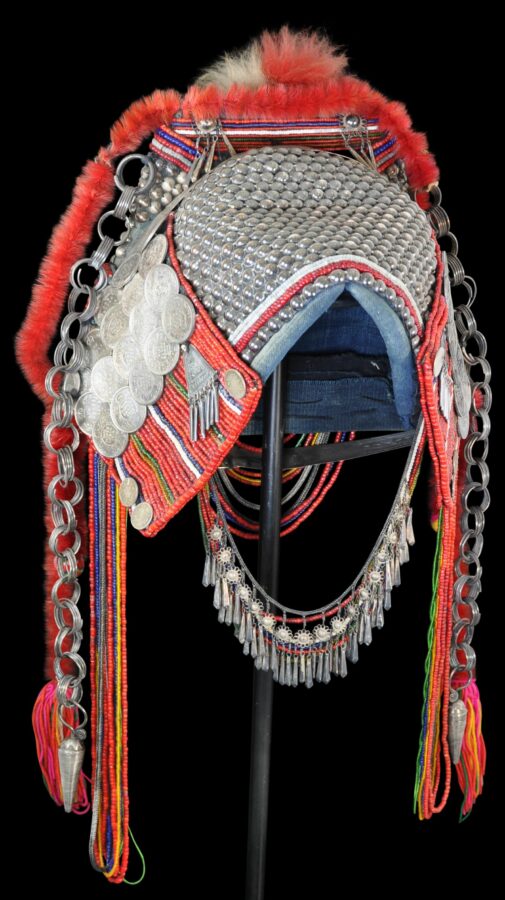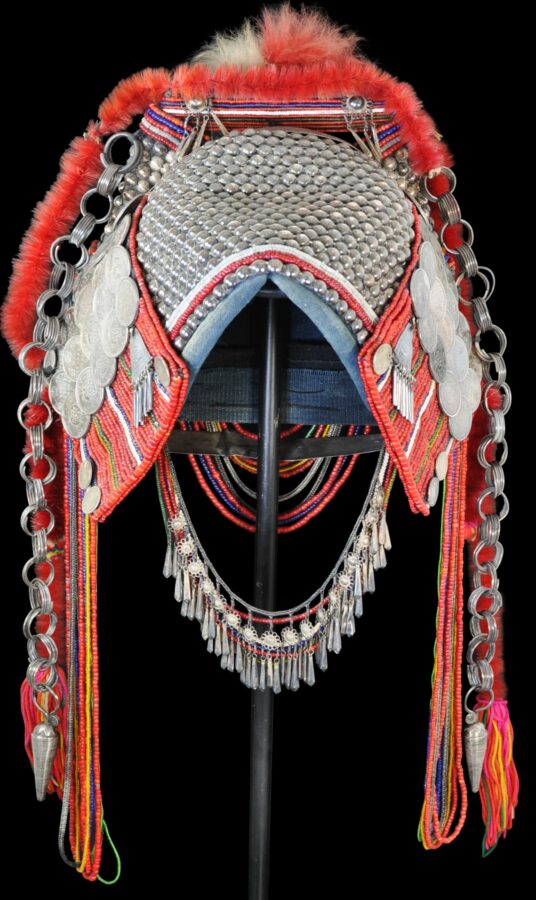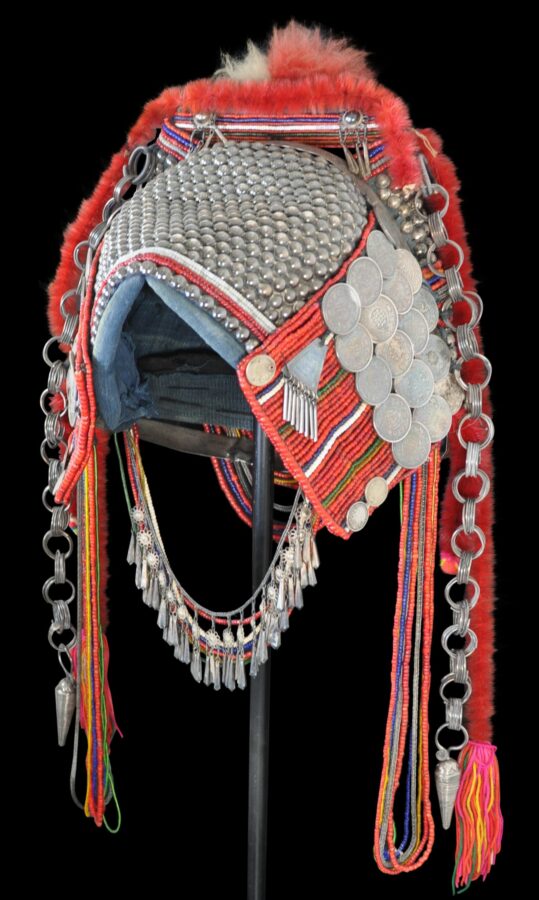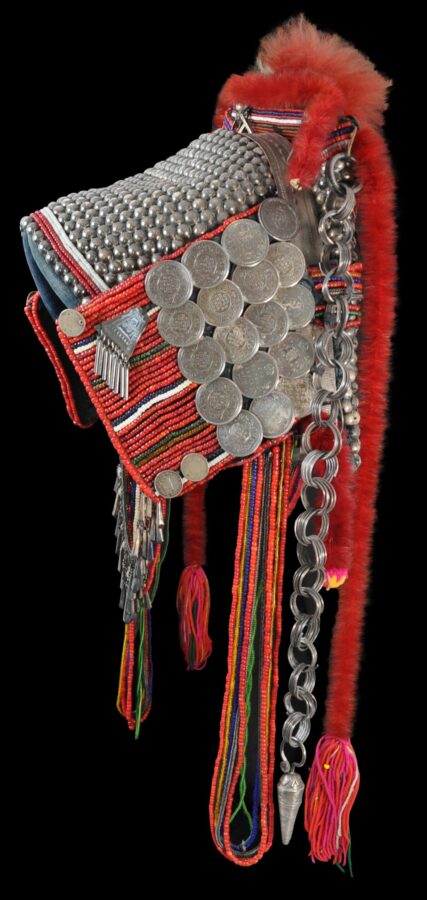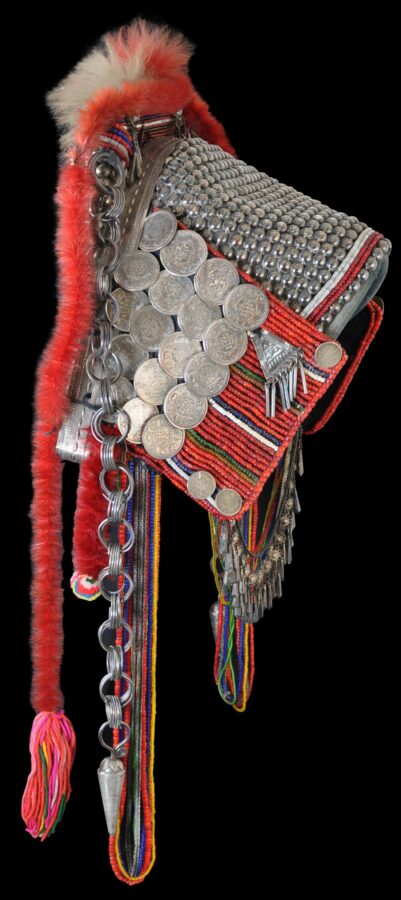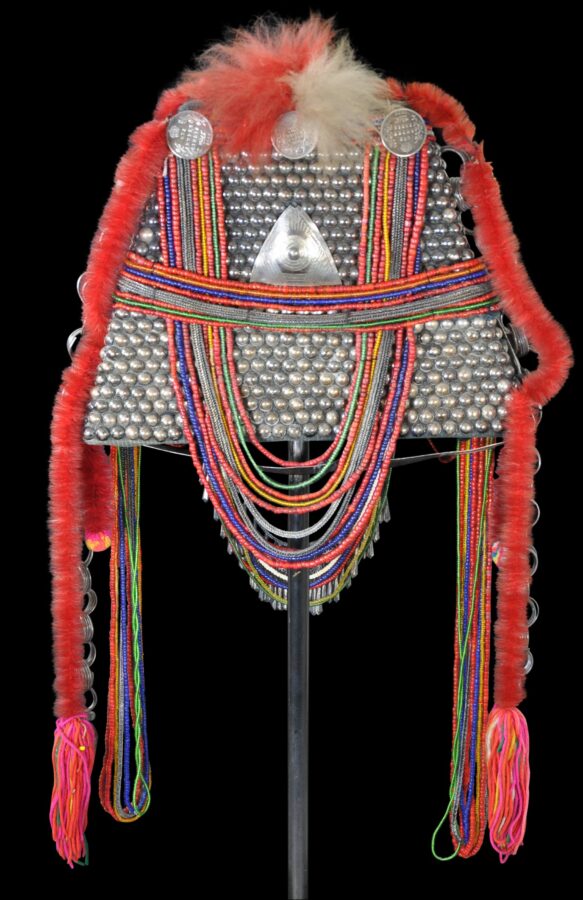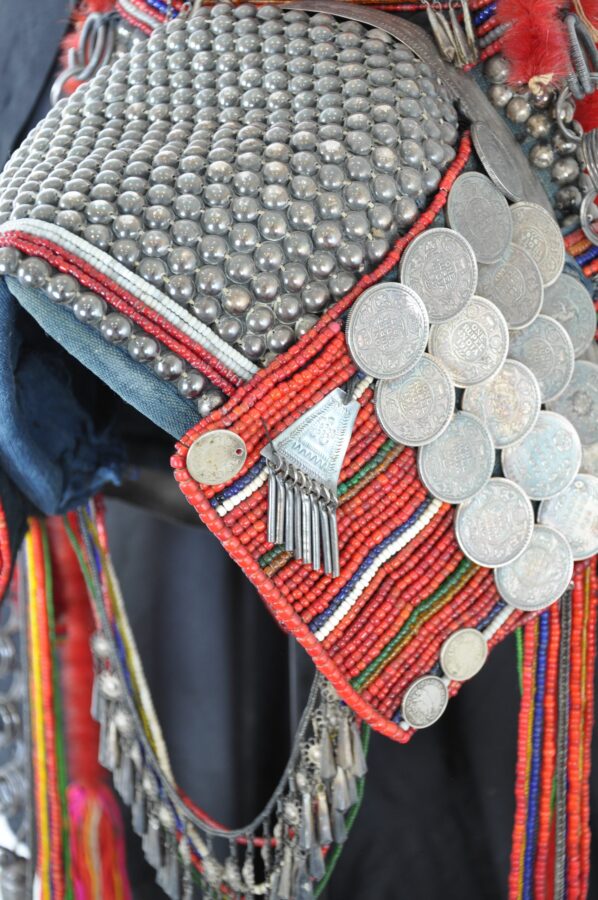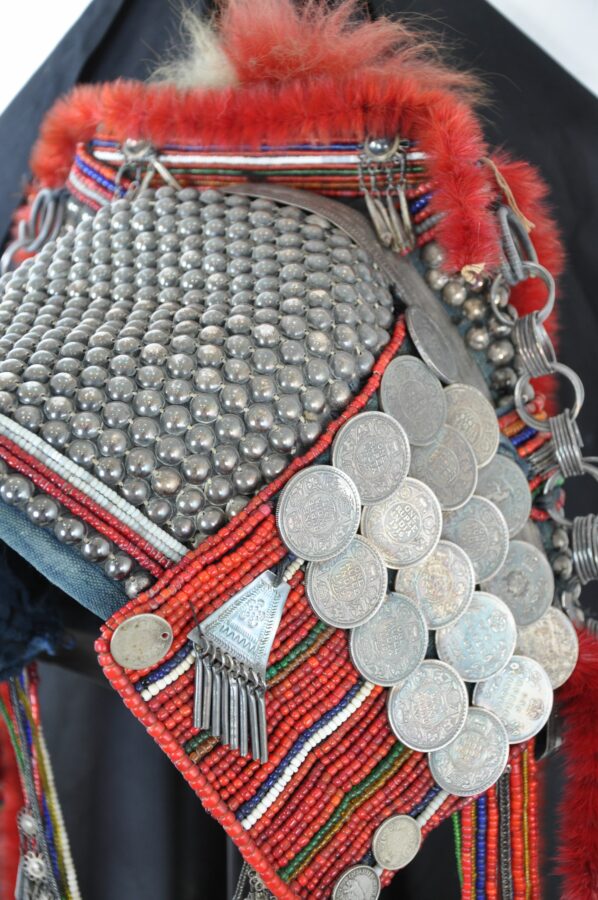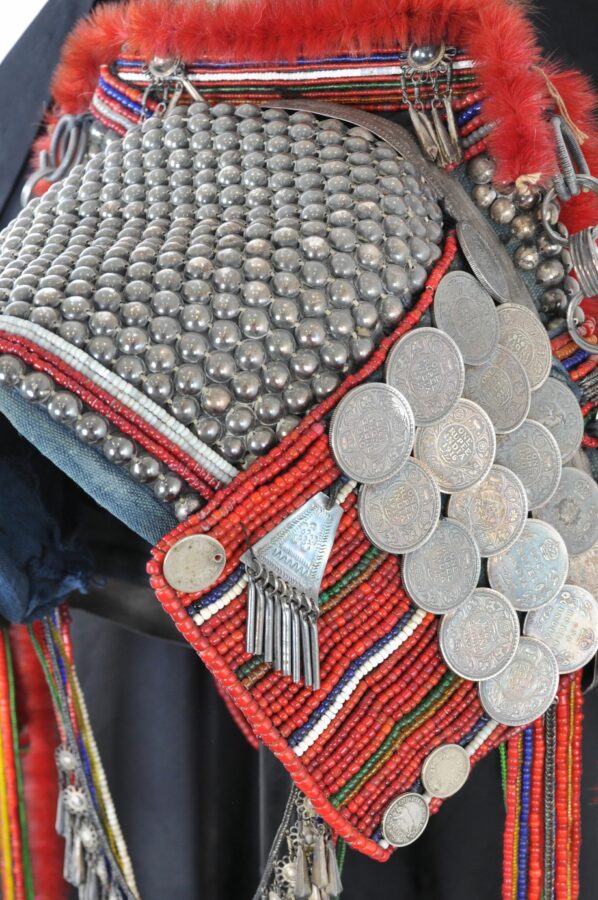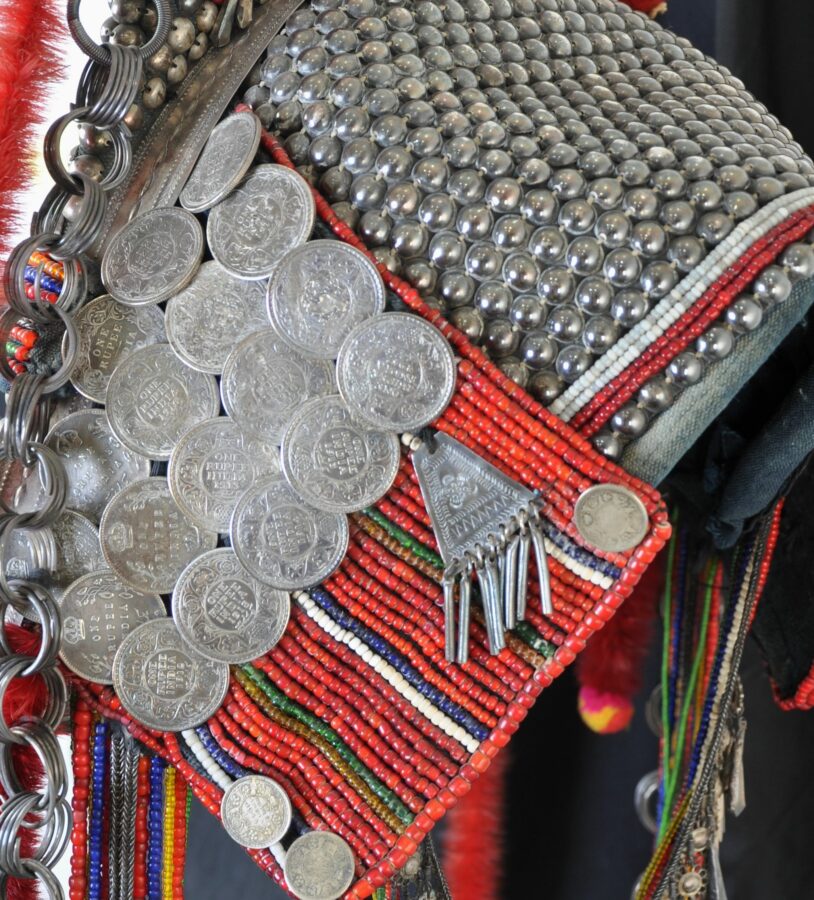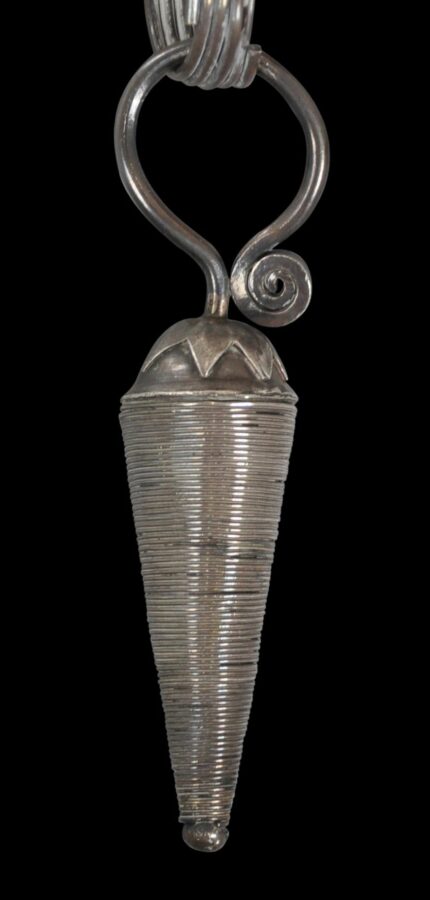This well-to-do Akha woman’s headdress, which dates from the colonial period, is from the Phami-Akha group. It is shaped like a large helmet with prominent side flaps. The handwoven, cotton substrate has been dyed with natural indigo to give it a blue-black hue.
The front-piece is completely covered in small silver half-spheres. The sides are embellished with dozens of colonial Indian rupee coins and six quarter rupee coins of various dates, mostly around 1918, but as late as 1946.
Numerous strings of red and other trade beads hang from the sides, as well as finely woven silver mesh chains; large silver chains that terminate in silver cone-like finials, tightly wound with fine silver wire; and red-dyed feather tassels that terminate with coloured pompoms and strands of coloured wool. These hang past the shoulders when the headdress is worn.
There is a fringe of woven silver wire and silver floral tassels that hangs beneath the chin, along with further strands of glass trade beads.
The top of the headdress is decorated with wool tassels and more strands of fine glass beads.
The back of the headdress is decorated with more strands of woven silver wire, beads and an etched triangular silver plaque.
The Akha (also known as Kaw) moved into Kengtung State in Burma around the middle of the 19th century. They were a minority group from Yunnan in southern China. Today, there are around 200,000 Akha living in Burma. There are Akha still in China, and also in northern Thailand. However, the Burmese Akha origins of this headdress is confirmed by the use of colonial Indian rupee coins which were also used in Burma, which was ruled by the British as part of colonial India. Their traditional language is part of the Tibeto-Burman family of languages.
Items of silver were prestige objects among the Akha, Such a headdress with so many silver embellishments would have been worn by a woman from a particularly wealthy family.
The headdress here is in excellent condition.
Copies of these sorts of headdresses abound but in general they are poor imitations of the genuine item such as the example here, with its copious embellishments, genuine silver applique, feather tassels, and so on. It is heavy and has ample signs of age.
A quality, black-metal, custom-made stand is included.
References
van Cutsem, A., & M. Magliani, Powerful Headdresses: Africa-Asia: The Ira Brind Collection, 5 Continents, 2010.
Lewis, P. & E., Peoples of the Golden Triangle: Six Tribes in Thailand, Thames & Hudson, 1984.


